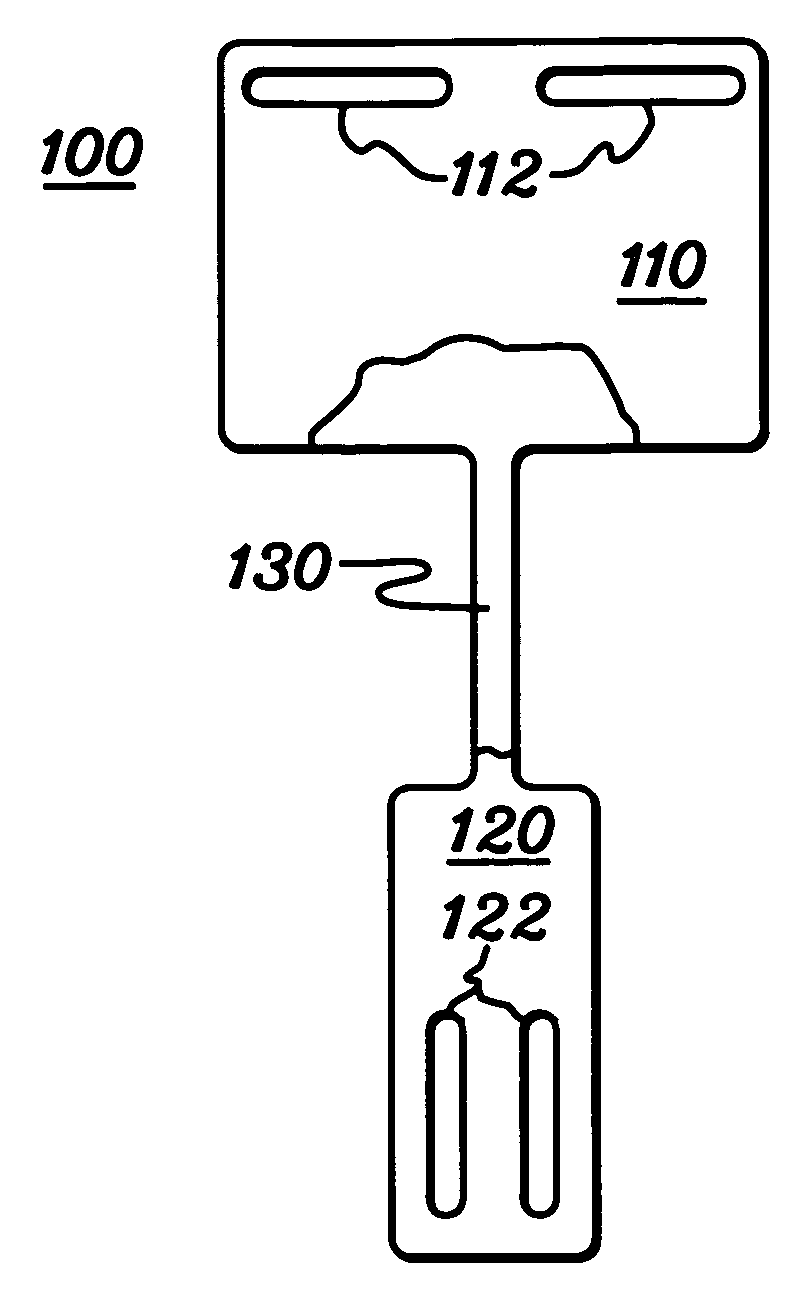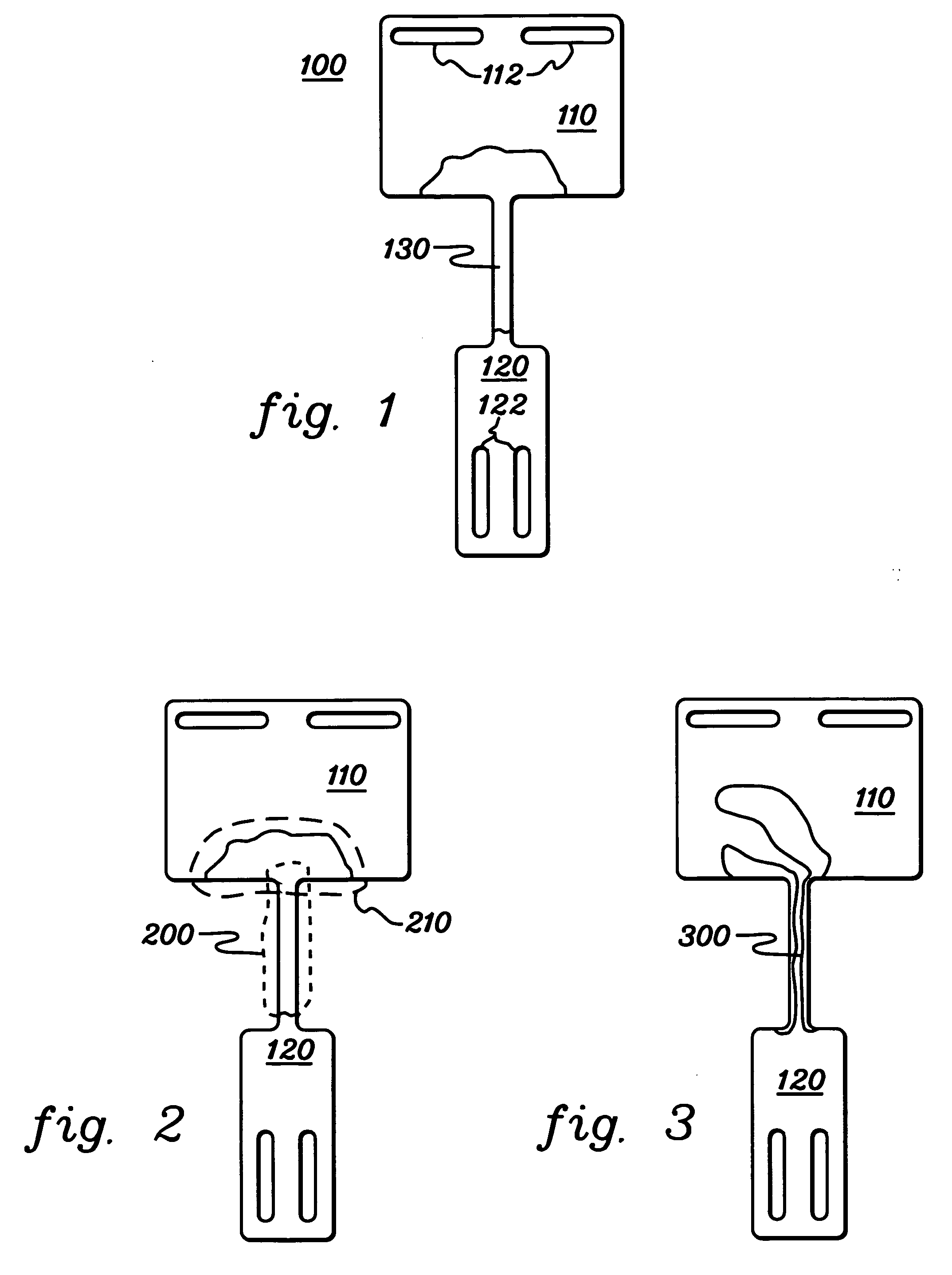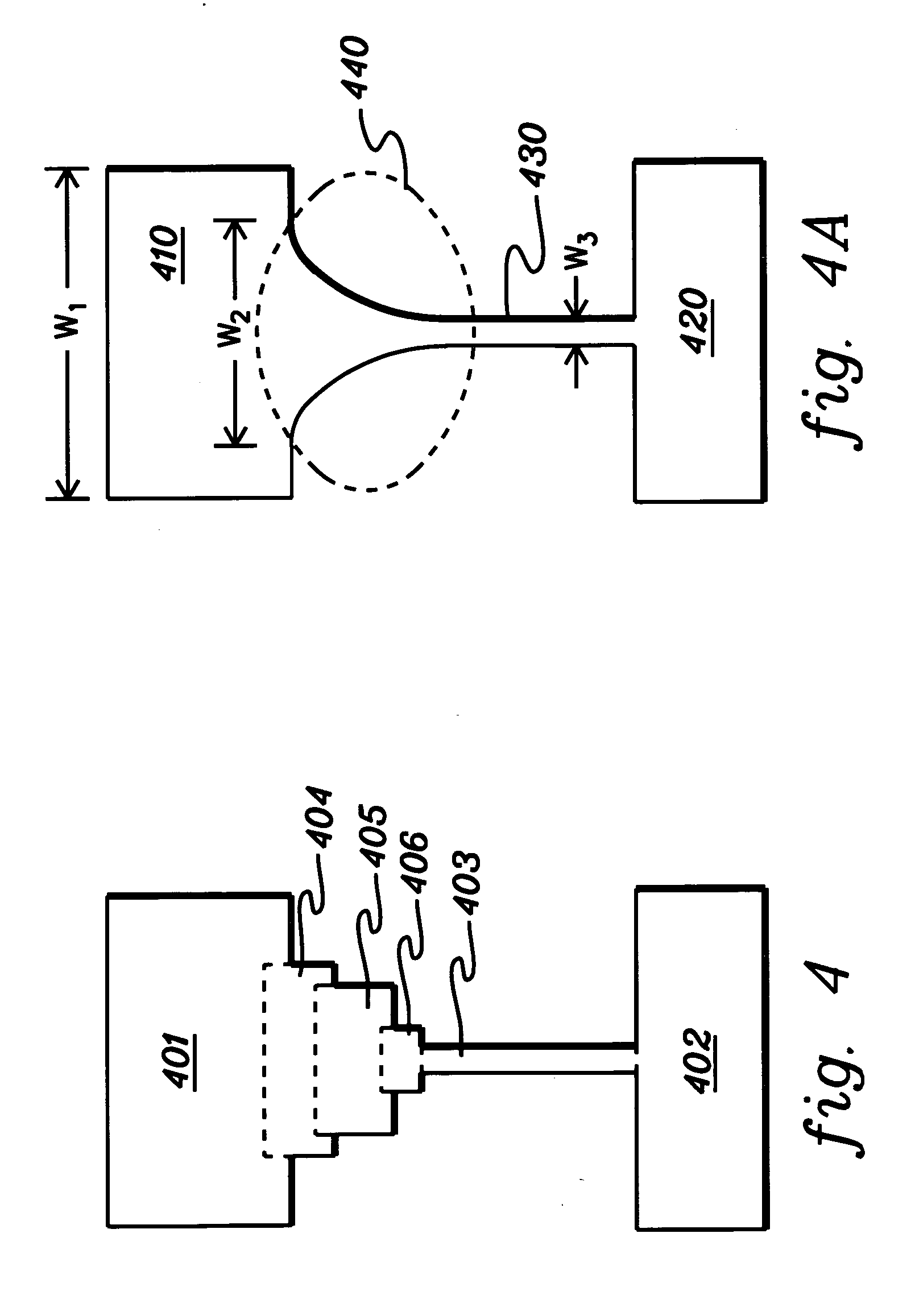Electrically programmable fuse structures with narrowed width regions configured to enhance current crowding and methods of fabrication thereof
a technology of fuses and narrow widths, applied in the field of fuses, can solve the problems of inability to shrunk the laser fuse size indefinitely, the difficulty of ablative laser-blown fuse implementation, and the limited relative size of laser fuses, etc., to achieve the effect of enhancing current crowding
- Summary
- Abstract
- Description
- Claims
- Application Information
AI Technical Summary
Benefits of technology
Problems solved by technology
Method used
Image
Examples
Embodiment Construction
[0028] Typically, the resistance of programmed prior art polycide e-fuses is highly variable. Large variations in the electrical characteristics of the driver transistors due to threshold voltage (Vt) variations are commonly encountered. This results in variations in programming current, which in turn causes the length of the opened gap (electromigration length of the silicide) in the fuse element to vary. Since read current is traditionally forced through the silicon underlying the blown fuse element, the overall resistance of the programmed fuse will also vary. This dependence of the programmed resistance on the electromigration length of the silicide can lead to difficulties in correctly sensing the state of a programmed e-fuse.
[0029] In addition, recently developed e-fuse structures take advantage of electromigration (EM) effects to address certain of the above-noted problems of achieving scaling of programming voltage. Briefly, the EM effect, caused by a positive divergence of...
PUM
 Login to View More
Login to View More Abstract
Description
Claims
Application Information
 Login to View More
Login to View More - R&D
- Intellectual Property
- Life Sciences
- Materials
- Tech Scout
- Unparalleled Data Quality
- Higher Quality Content
- 60% Fewer Hallucinations
Browse by: Latest US Patents, China's latest patents, Technical Efficacy Thesaurus, Application Domain, Technology Topic, Popular Technical Reports.
© 2025 PatSnap. All rights reserved.Legal|Privacy policy|Modern Slavery Act Transparency Statement|Sitemap|About US| Contact US: help@patsnap.com



